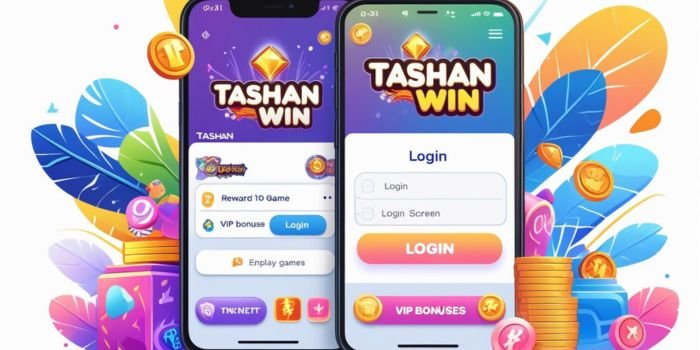Swiftly advancing in Dablo 4 demands more than simple demon slaying. It involves grasping the underlying mechanics, optimizing your rewards, and, essentially, mastering the art of navigating the mayhem with maximum efficiency. Reaching level 30 is often viewed by players as a key threshold. It signifies the moment when your character evolves. It goes from being a somewhat vulnerable novice to a legitimate harbinger of dread in Sanctuary. It’s not just a milestone of power but a gateway to builds, skills and opportunities that reshape your gameplay. While some may opt for shortcuts through services like Diablo 4 power leveling, the core path remains achievable and rewarding for those who plan their route. Whether you’re chasing early PvP potential or just aiming to unlock that one skill point that changes everything, this guide lays out how to accelerate your progress and make every demon-slaying moment count.
Early Game Philosophy and Momentum
The first 10 levels of Diablo 4 are deceptively easy but set the tempo for the rest of your grind. Picking the right class and build for leveling matters. Sorcerers with AoE spells like Chain Lightning or Necromancers using Blight and Corpse Explosion can clear groups of mobs faster than classes focused on single-target damage. Barbarians and Druids can lag slightly in pace early on, though optimized skill paths and gear picks quickly close that gap. Momentum here is everything.
Once you’ve emerged from the tutorial and landed in the open world, resist the temptation to explore every nook. Prioritize content density. Look for areas like the Fractured Peaks or Scosglen that offer high monster density and short respawn times. Events—particularly timed ones—are gold mines of XP and item drops. Combine these with early side quests in compact zones, and you’ll fly through levels 10–20 with minimal downtime.
World Tiers matter more than most realize. Sticking to World Tier 1 during your level push may seem counterintuitive, but the faster kill speed often outpaces the slight XP bonus from World Tier 2. Once you’re around level 25 and geared appropriately, then consider bumping up the difficulty. It’s not about pride; it’s about pace.
Gear Optimization for XP Gain
In Diablo 4, smart gearing starts early. While you’ll swap gear constantly, especially from levels 1–20, prioritize affixes that enhance AoE, resource generation, or movement speed. The faster you can spam your main skill and move from one mob to another, the quicker you level. Items that reduce cooldowns or improve mana/essence regeneration are invaluable.
Don’t ignore the Codex of Power. Even at low levels, extracting Aspects and imprinting them onto rare gear can make a world of difference. Aim for XP-boosting traits like “Slaying Elites grants increased XP” or traits that improve survivability so you can focus on aggression. Vendors can also roll surprisingly powerful low-level gear. Check them regularly, especially when transitioning between hubs.
Healers and alchemists aren’t just for potions. Upgrade your health potions as soon as available. This not only improves survivability but lets you play more recklessly, especially important in AoE-heavy builds that require mid-combat positioning. Prioritize collecting materials like Gallowvine and Biteberry early to enable crafting and upgrades.
Route Efficiency and Event Timing
Planning your leveling route is essential. You’ll want to string together events, dungeons, and quests in a way that minimizes travel time and maximizes XP output. Diablo 4’s open-world design rewards players who treat their climb like a circuit rather than a random walk. Many efficient players adopt a loop approach: start at a town hub, sweep through 3–4 nearby event zones, clear a dungeon, then return to turn in quests and reset.
Local Events reset roughly every 10 minutes. If you notice one spawn near a fast travel point, complete it and circle back. These events scale well, reward decent gear, and give large bursts of experience, especially when completed with bonus objectives. They also scale in difficulty and rewards when done in groups, making them a prime target for short-term party play.
Legion Events and World Bosses offer phenomenal XP, but their sporadic timing makes them unreliable for a fast 1-30 grind. If one pops while you’re nearby, absolutely take advantage—but don’t wait around for them to start. Prioritize what’s available now.
Dungeon Strategy and XP Loops
Dungeons are both a blessing and a trap. Some provide incredible XP-to-time ratios, while others are drawn-out marathons with minimal gain. Identify fast-clearing dungeons early. Halls of the Damned, Iron Hold, and Garan Hold are popular for their tight mob clusters and minimal backtracking.
The optimal approach is to target dungeons that complement your class strengths. Sorcerers benefit from open layouts where they can kite and nuke, while Rogues and Barbarians favor corridors that force close combat. Map awareness here is vital—don’t waste time doubling back for optional objectives unless the XP bump justifies it.
A practical strategy for XP grinding is the “reset loop.” After clearing a dungeon and claiming the rewards, exit and reset the instance. While Blizzard has placed limits on how often and how quickly dungeons can be reset, a simple method is to teleport to town and then re-enter. This allows high-output dungeons to be reused efficiently for rapid gains.
What’s often overlooked is pacing. When running XP loops, make sure your movement from one pack to the next is fluid. Don’t wait for cooldowns if your build can function partially without them. In cases where your cooldowns define your efficiency, rotate between dungeons that suit either burst or sustain.
Additionally, keep an eye on dungeon modifiers. Some might give enemy buffs that don’t affect your build much, while others could slow you down. Don’t commit to unfavorable layouts—teleport out early if the first few rooms suggest inefficient pacing. The best players cut their losses quickly and maintain XP per hour benchmarks.
Running dungeons with teammates can multiply the efficiency. While loot distribution may get shared, speed clearing with a group who knows the layout and enemy patterns can easily double your XP rate. In fact, some grinding communities coordinate specific dungeon routes daily to maintain optimal leveling speeds, a method mirrored by platforms like SkyCoach without openly advertising shortcuts.
Rest Bonuses and Consumable Buffs
Experience boosts matter. Resting in towns grants a bonus XP buff, so make sure to log out from these zones if you’re taking breaks. Shrines and blessings can also temporarily increase your kill speed or survivability—making short work of elite packs and accelerating your XP flow.
Elixirs should not be underestimated. Alchemists offer elixirs that boost XP gain by 5% for 30 minutes. Craft these early and often. Most require only common materials and can be stacked with other buffs. If you’re grouping up, coordinate elixir use for maximum efficiency.
The difference between using elixirs consistently and ignoring them can shave hours off your leveling journey. Some players even craft multiple batches and set timers to ensure seamless use throughout their grind.
Markers of Efficient Grinding
Here are some key indicators you’re leveling at optimal speed:
- You’re gaining roughly 1 level every 10–12 minutes up to level 20
- You’re never standing still for more than 30 seconds
- You consistently complete events with bonus objectives
- Your gear always matches your level within 1–2 item levels
- You use XP elixirs and rest bonuses actively
Missing any of these means you’re likely wasting time. Reviewing your own gameplay or joining communities like those supported by SkyCoach can help refine weak points in your grind.
Leveling Efficiency Table
| Level Range | Average XP Needed | Time Per Level (Optimal) | Recommended Focus |
| 1–10 | ~10,000 | ~5–8 minutes | Events, Early Quests |
| 10–20 | ~40,000 | ~10–15 minutes | Event Chains, Fast Dungeons |
| 20–30 | ~100,000 | ~15–20 minutes | XP Loops, Gear Optimization |
Mid-Game Pacing and Final Push
As you near level 30, fatigue often sets in—especially if the grind has been done in one stretch. This is when efficiency drops, and mistakes are made. Counter this by breaking your sessions into focused sprints. Set a goal of 2 levels per session, with a cooldown period after each.
Evaluate your build. If you started as a generalist, now is the time to re-spec into a damage-optimized layout. Damage over time builds, trap-centric rogues, and burn-specced sorcerers tend to perform well in sustained engagements that dominate the mid-game. Investing in a class-specific unique or a legendary that amplifies your main skill can significantly increase XP per hour.
This is also when you should consider raising your World Tier if you haven’t already. With a tuned build and upgraded gear, the increased difficulty can finally pay off with worthwhile XP returns. Just ensure you’re clearing content at a similar pace—efficiency over challenge remains the rule.
Conclusion: The Road to 30
Reaching level 30 in Diablo 4 isn’t just about raw grinding—it’s about strategic execution. From your class selection and build path to your routing, gear prioritization, and resource management, every decision compounds your efficiency. Whether you’re chasing seasonal goals, preparing for World Tier progression, or just eager to experiment with new endgame builds, level 30 is your threshold. Make it count.
While services like SkyCoach exist to streamline the journey for those short on time, the climb can be immensely satisfying for players who embrace the process. The underworld of Sanctuary rewards smart, aggressive, and aware players, and nothing embodies that more than a level 30 adventurer who got there through grit and planning.




